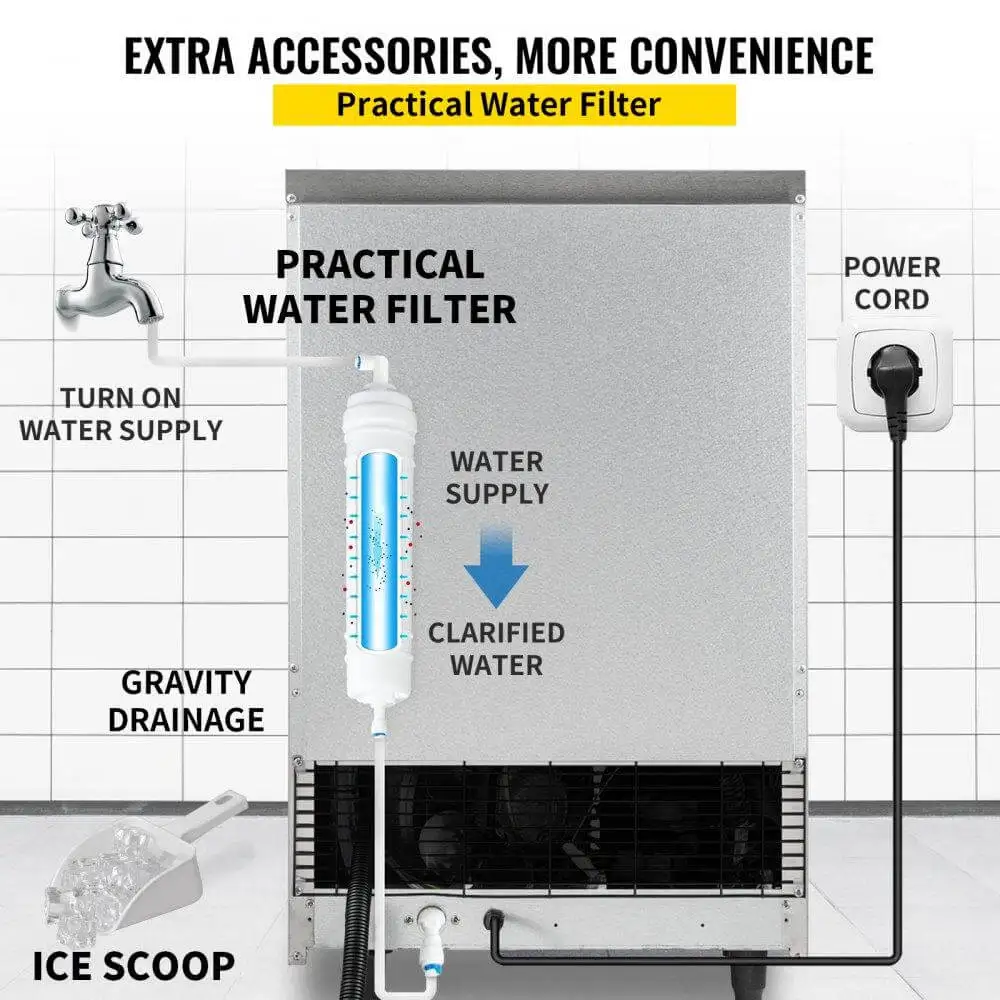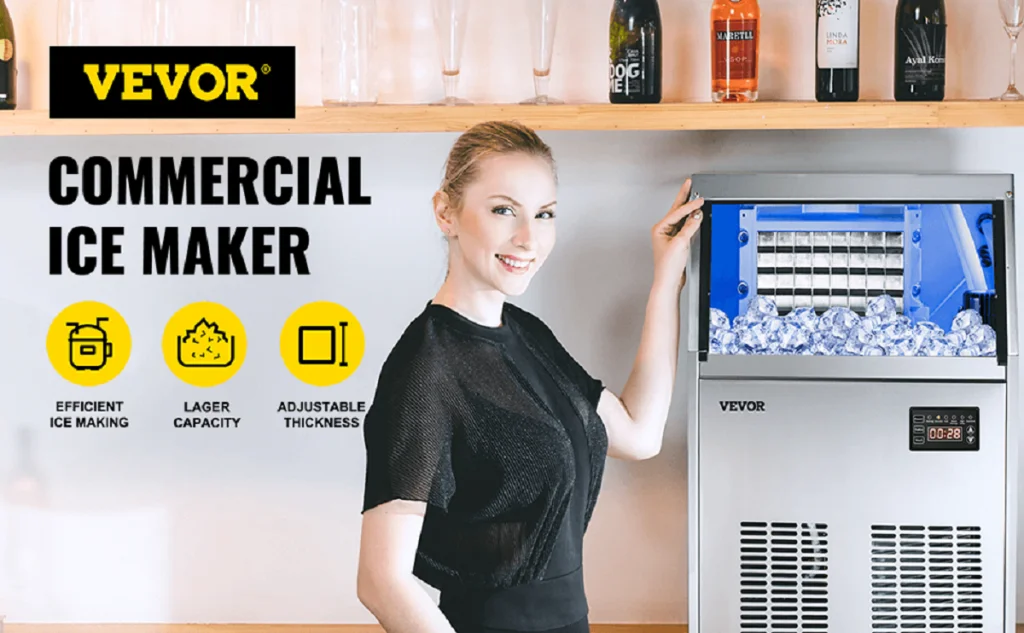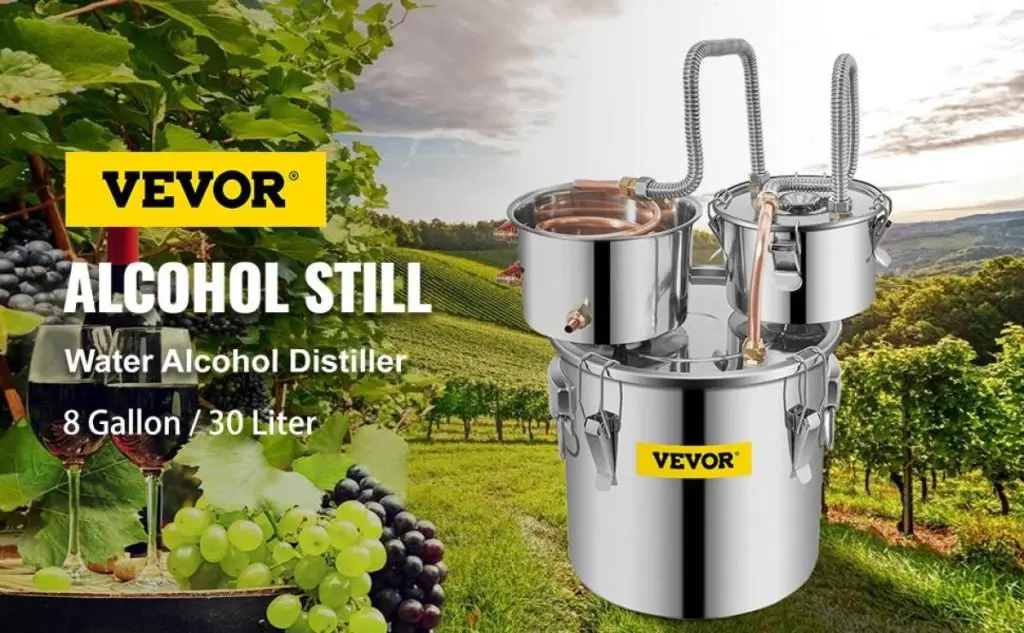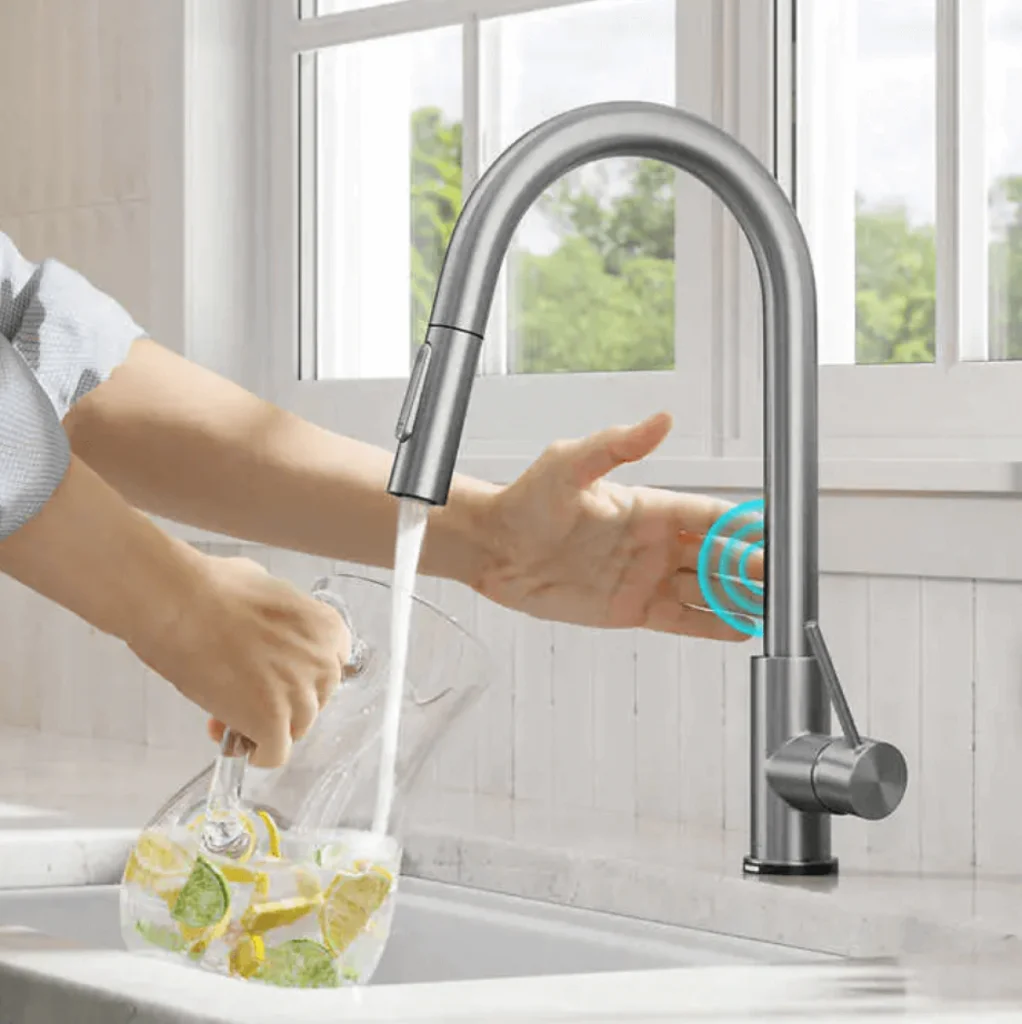You might already know a bit about how ice makers work, but have you ever thought about their drainage needs? There are a number of different drainage systems that you can opt for your ice maker. If you want to know which one would suit you best, then join us as we check out different ice maker drain pump setups.
Through this guide, you’ll understand the need for drainage for your ice maker, explore various drainage setups, and grasp the complexities of operating a drain pump.
We’ll also explore when it becomes necessary to invest in an ice maker drain pump and what options are out there for commercial settings.
Read on as we answer some frequently asked questions that could clear up any confusion or concerns you may have regarding ice maker drains. So, let’s start the journey of understanding.
Table of contents
Do Ice Makers Need a Drain?
Ever wondered why your ice maker expels so much water that it results in flooding your kitchen? The answer might be all about drainage. Yes, most ice makers do need a drain. But it’s not just any old hole in the ground; there are specific setups to make sure water flows away from your ice maker without making a mess in your kitchen.
Below, we have discussed various types of drain setups for your convenience so you can easily choose the right one for your kitchen.
Types of Ice Maker Drain Pump Setups
Ice machines come with various draining options to fit their environment and ensure they work efficiently without causing water damage or mold growth. Having the liberty to choose from a variety of setups means that no matter where you’re putting your ice maker, there’s a way to manage its wastewater effectively. So, let’s break down these systems one by one and understand how every option works.
Ice Machine Floor Drain Setup
Floor drains are straightforward – gravity does all the work. Your ice machine sits above a drain on the floor, allowing melted water to flow directly into it. It’s simple but requires your machine to be positioned near an existing drain, which might not always be convenient or possible.
This setup works best for larger commercial kitchens with dedicated areas for their ice machines, where installing new plumbing lines isn’t a headache.
Ice Machine Standpipe Drain
A standpipe drain offers more flexibility than its floor counterpart by letting you position your machine further away from the main drainage system. Water, once it turns to liquid from the ice machine, journeys down a conduit destined for the municipal wastewater system. But beware: without proper air gaps, you could invite backflow problems or worse, contamination of your fresh ice supply.
To prevent such nightmares, installation must adhere strictly to local building codes and regulations.

Ice Machine Wall Drains
If there’s no room on the floor and maneuvering around tight spaces sounds like a challenge you’d rather avoid, wall drains come to the rescue. They operate similarly to standpipes but are mounted on walls, thus saving precious floor space while still efficiently disposing of wastewater.
The catch? You’ll need access behind or within walls for this type of installation, which can get tricky during renovations or if space is already at a premium in your kitchen layout.
Ice Machine Transfer Drains
Transfer drains take flexibility up a notch by allowing you to route ice machine wastewater through existing plumbing lines to a distant drain location. This setup is ideal for businesses with complex layouts where a direct line drainage option isn’t feasible.
However, getting it right requires adept knowledge of your building’s plumbing system to avoid potential water damage or the growth of unwelcome microorganisms. Always have a professional on-site to guide you through the process for peace of mind and efficiency.
It also highlights how crucial proper installation is—get this wrong, and you could face leaks or worse. So always check what type of drain connection your chosen model needs before installation.
Using a Drain Pump with Your Ice Machine Drain
A drain pump acts like an elevator for water, moving it from lower levels up to higher drainage systems when gravity alone won’t cut it. If your setup can’t accommodate a direct line to the nearest floor drain due to distance or elevation challenges, then integrating a drain pump becomes not just helpful but necessary.
To put this into perspective, think of having an office on the 10th floor but needing to send documents down to the lobby without leaving your desk—this is what a drain pump does for your ice machine’s excess water. It ensures that even if you’re setting up a shop where traditional plumbing doesn’t reach easily, you can still keep things running smoothly and efficiently without water woes slowing you down.
When Do You Need an Ice Maker Drain Pump?
A drain pump for your ice machine isn’t just about keeping things tidy; it’s essential in situations where gravity drains aren’t feasible. If your ice maker is located far from the nearest floor drain, lower than the drain line, or if plumbing codes require it, that’s when a drain pump becomes not just helpful but necessary. These pumps actively move melted ice water to an appropriate drainage area, ensuring smooth operation without flooding risks.
For commercial settings like restaurants or bars with high-volume ice machines that are often positioned away from convenient draining points—using a commercial-grade drain pump ensures efficient and reliable removal of wastewater. This keeps operations running smoothly without interruptions caused by water build-up.
Choose VEVOR Ice Maker for Quality Ice and Easy Drainage
When you’re in the market for an ice maker, you would definitely look for the best one. You would want one that complements your kitchen or business needs perfectly. This is where VEVOR steps in with its lineup of top-notch ice makers equipped with efficient drainage systems.
A quality ice machine isn’t just about keeping your drinks chilled; it’s also about how easy it makes your life when it comes to maintenance and cleanup. With VEVOR, you hit the jackpot on both fronts. This VEVOR 110V Commercial Ice Maker also comes with a one-button cleaning function, which cleans all the internal pipes and trays.

The ease of installation is another feather in VEVOR’s cap. They provide clear instructions and all necessary components right out of the box, letting you set up your new appliance without calling for professional help. Plus, by choosing a model from their extensive range, you’re opting for reliability and peace of mind, knowing that soggy floors caused by drainage issues will be a thing of the past.
FAQs About Ice Maker Drain Setup
Wondering about the ice maker drain setups in detail? You’re not alone. Below, we have answered important questions regarding ice maker drain pumps. So you don’t have any confusion. Here’s all that you need to know.
Do ice makers need to be plumbed in?
Absolutely, and here’s why: To keep your ice crystal clear and taste great, a direct water line feeds into the machine for continuous ice production. But what goes in must come out—meaning water from melted ice needs an exit strategy via plumbing.
This setup ensures efficiency and prevents manual emptying nightmares. If you’ve ever faced a flooded kitchen because of improper drainage, you’ll appreciate this design necessity even more.
Have you ever wondered if ice-making machines are big on wasting water?
The short answer is no; they don’t have to. Modern machines are designed with efficiency in mind, reusing water from melted cubes to make new ones. This cycle reduces waste significantly but depends on correct installation and settings adjustments.
Do ice makers have drain pumps?
Moving onto another critical component—the drain pump—is essential for certain installations where gravity alone won’t do the job of removing excess water efficiently. These pumps help force water through the draining process when it can’t flow downwards naturally due to location constraints or structural limitations within buildings or homes.
In other words, if your machine is set up far from a floor-level drain or below sewer lines, these pumps become non-negotiable allies against potential flooding scenarios.
Can you drain an ice machine outside?
Technically, yes, although it’s not always recommended. Draining outdoors might seem like an easy fix, but regulations often exist concerning how and where wastewater can be disposed of. To stay on the safe side (and in good standing with local codes), consulting a professional before making any decisions here is crucial.
Conclusion
So, you’ve learned about the ins and outs of ice maker drain pump setup. It is important to remember that not all setups are created equal. In this article, you learned that different types need distinct drains – from floor to wall, each with its purpose.
You also discovered the crucial role of an ice maker drain pump in keeping things flowing smoothly. And when it comes to needing one? Efficiency is key, as it keeps the water troubles away.





